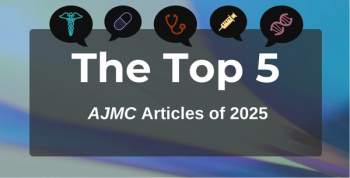
Review Examines Interstitial Lung Disease in Lysosomal Storage Disorders
This new analysis shows early diagnosis of some lysosomal storage disorders can help avoid irreversible damage across the board.
Lysosomal storage disorders (LSDs), including Gaucher disease (GD), Niemann-Pick disease (or acid sphingomyelinase deficiency [
LSDs are genetic diseases cased by mutations in the genes that encode for the functions of lysosomal enzymes, which play a key role in breaking down various molecules and sometimes affect specific transporters that export broken-0down molecules from lysosomes. These lysosomal disorders lead to cellular dysfunction and such clinical abnormalities as organ damage.
Authors of a study published in the
- “lung” and “Gaucher disease”
- “lung” and “Niemann-Pick disease” or “acid sphingomyelinase deficiency”
- “lung” and “Fabry disease”, without limitations on patient age
Lung Effects of Gaucher Disease
GD, the most prevalent inherited LSD, is an autosomal recessive disease that results in lysosomal hydrolase acid β-glucosidase deficiency and accumulation of its substrate, glucosylceramide. Depending on the type, effects of GD include bone disease, hepatosplenomegaly, thrombocytopenia, anemia, lung disease, and nervous system manifestations. Patients with type 1 do not typically have nervous system disease, but types 2 and 3 both present primary neurological disease.
Cases in which the lungs specifically become involved are not reported often, and findings varied across the studies in the analysis. One study of 95 patients found that the most common pulmonary function abnormalities were reduced functional residual capacity, reduced carbon monoxide transfer coefficient, and reduced total lung capacity, Ten of 81 patients with available chest radiographs had ILD. The authors speculate that pulmonary vascular diseases are more likely to affect patients with GD with pulmonary arterial hypertension and hepatopulmonary syndrome.
Therapies for GD have been available since 1991, and 3 ERT options have been developed. Although ERT can reverse hematological and liver or spleen involvement, the same has not been seen in the rare reported cases of ILD in patients treated with ERT. The authors note that as far as treatment, splenectomy should be avoided when possible due to its association with pulmonary hypertension and worse survival in GD.
ASMD and Lung Symptoms
ASMD is a rare autosomal recessive disease caused by mutations in the SMPD1 gene and can lead to accumulation of lipids in cells, including sphingomyelin and cholesterol, depending on the subtype. Type A causes severe neurological symptoms in childhood, and type B is chronic and most frequently involves hepatosplenomegaly and pulmonary effects. Type B can become evident in adulthood, and patients show symptoms such as hepatosplenomegaly, ILD, hyperlipidemia, and thrombocytopenia.
Pulmonary involvement most often occurs in type B ASMD (ASMD-B) and can be diagnosed in patients of any age. It can be identified ahead of ASMD diagnosis or develop afterward. Depending on the patient, ILD may show in a variety of ways, from none to respiratory failure that has no association with enlarged organs, which are another ASMD manifestation. Nearly 90% of patients with ASMD-B show ILD identified by CT scan, and the respiratory symptoms are often mild if present when diagnosed. Overall, respiratory disease accounts for roughly 25% of deaths in patients who have ASMD-B. Of the patients who die from respiratory disease, about 82% die from ILD.
Multidisciplinary symptom management is key in ASMD, and splenectomy has potential to worsen pulmonary disease and is discouraged unless required. There are no therapies currently approved specifically for ASMD, but the authors point to olipudase alfa, an ERT, as a promising option based on clinical trials.
Lung Manifestations of FD
FD, an X-linked LSD, is caused by the GLA gene mutation. This leads to decreased α-galactosidase A activity and subsequent accumulation of glycosphingolipids, causing neurological, ocular, skin, renal, and cardiac effects.
While respiratory symptoms related to chronic obstructive pulmonary disease–like or cardiac involvement are common in FD, ILD is rare. Obstructive lung disease, however, seemingly affects more patients with FD (32.3% in one study) than healthy people in the same age group (1.0%-3.4%). Data on FD and ILD are scarce, with one study evaluating systemic chest CT scans in patients with FD, that the authors know of. Two case reports involving FD patients found impaired gas exchange and patchy ground-glass opacities, and one of those patients saw lung function improvement after ERT with agalsidase beta.
“Regardless, from the current literature, there is no clear-cut evidence for involvement of the lung interstitium in FD,” the authors concluded.
Overall, the authors conclude that all of the LSDs included in the review can cause organ fibrosis, but the rates of ILD and likelihood of improvement after diagnosis vary by disease. Therefore, diagnosing them early is a pivotal aspect of treatment.
“Early diagnosis of these 3 LSDs is crucial to avoid irreversible organ damage,” they wrote. “Early initiation of ERT can, at least in part, prevent organ failure. Lung involvement is part of the phenotype of LSDs. Long-term follow-up under ERT along with standard care will demonstrate or not whether lung involvement is reversible.”
Reference
Borie R, Crestani B, Guyard A, Lidove O. Interstitial lung disease in lysosomal storage disorders. Eur Respir Rev. Published online April 29, 2021. doi:10.1183/16000617.0363-2020
Newsletter
Stay ahead of policy, cost, and value—subscribe to AJMC for expert insights at the intersection of clinical care and health economics.








































